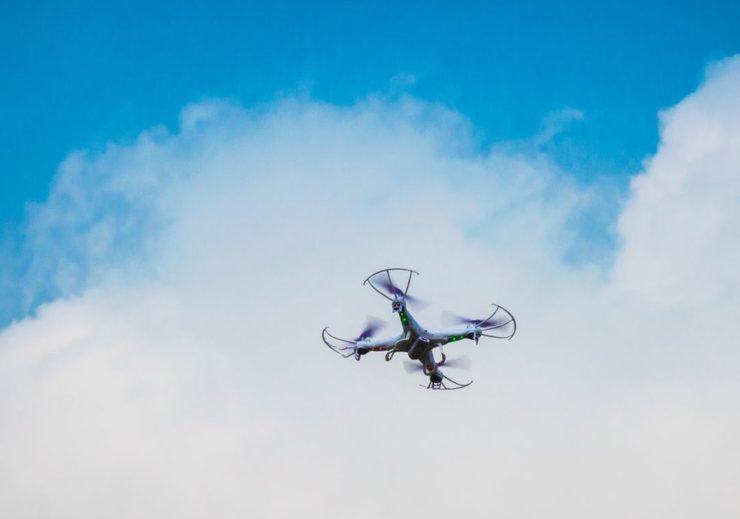
Drones come in many different sizes. They range from the small versions the size of your palm to larger ones the size of a small car. While their speeds and size of cargo they can carry are important factors to consider when buying one, there is something quite interesting about their flight times. Contrary to what many people might expect, larger drones are able to stay in the air for longer flight times than smaller drones.
The best way to understand the physics is by considering the effects of varying the power of the rotors and the actual power needed to fly a drone. The basic understanding of how a drone works is that its rotors take the air above the drone and pushes it downward. The air pushes back on the rotors at an equal force. If the force of the air is equal the total weight of the drone, it will fly. Increasing the rotor sizes of the drone increases the airspeed which effectively increases the power of the drone.
Power is the rate at which energy is consumed. So an aerial drone with greater power requires a larger battery in order to stay in the air for a longer period of time. Let’s take two random drone examples; the Syma X20 and the DJI Phantom 4. The Phantom has a mass of 1.38kg and an estimated rotor area of about 0.18 m2. So to reach the indicated 28 minutes, it needs a battery to supply a total of 2.9 x 105 Joules.
On the other hand, the tiny Syma X20 has a rotor area of about 0.0043 m2 and a mass of about of 100 grams. With these values, the Syma requires about 3.2 x 104 Joules to hover for a total of 28 minutes. And that requires a significantly larger battery.
Lithium batteries that most drones use have a specific energy per mass of about 5 x 105 Joules per kg. So to design a battery that can provide a total power of 3.2 x 104 Joules of energy to power the Syma X20 for 28 minutes would require it to have a mass of 60g. This leaves only about 40g to go to other important items such as the controller, camera, motors, radio, etc. Considering these facts, manufacturers have no choice but to use smaller batteries in smaller drones, which can only sustain shorter flights. So until we get more powerful batteries with higher energy per mass ratio, small drones are still going to fly for less time compared to their larger counterparts.
|